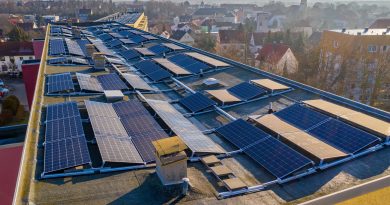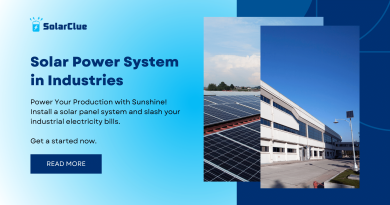What Are The Major Components Used For Making Solar Panels?
Solar panels are complex devices designed to convert sunlight into electricity efficiently. Understanding the components of a solar panel and their functions can provide valuable insights into their performance, durability, and advancements in technology. This blog explores each component, the materials used, and how advanced technologies are improving solar panel efficiency.
Table of Contents
- 1 The Heart of the Solar Panel: Solar Cells
- 1.1 Types of Solar Cells:
- 1.2 Protective Layers: Glass, Backsheet, and Encapsulant
- 1.3 The Role of Junction Boxes and Bypass Diodes
- 1.4 Frame and Mounting Structures
- 1.5 Materials and Their Impact on Solar Panel Efficiency
- 1.6 Solar Panel Components and Their Functions
- 1.7 Future Trends in Solar Panel Components
The Heart of the Solar Panel: Solar Cells
Function: Solar cells are the fundamental building blocks of a solar panel. They are responsible for converting sunlight into electrical energy through the photovoltaic effect.
Types of Solar Cells:
- Monocrystalline: Made from a single crystal structure, offering high efficiency and longevity.
- Polycrystalline: Made from multiple silicon crystals, providing a cost-effective solution with slightly lower efficiency.
- Thin-Film: Made by depositing photovoltaic material on a substrate, known for flexibility and lightweight but lower efficiency.
- PERC (Passivated Emitter and Rear Cell): Enhanced efficiency by adding a passivation layer that reduces electron recombination.
Materials: Silicon is the primary material used in solar cells, with variations in crystalline structure affecting efficiency and cost.
Protective Layers: Glass, Backsheet, and Encapsulant
Glass:
- Function: Protects the solar cells from environmental factors such as weather, debris, and UV radiation.
- Material: Typically made from tempered or low-iron glass to enhance durability and light transmission.
- Impact: High-quality glass improves light penetration and protects the cells, contributing to overall efficiency and longevity.
Backsheet:
- Function: Serves as the rear layer of the solar panel, providing electrical insulation and protection from moisture and other environmental elements.
- Material: Commonly made from polymer materials like PVF (polyvinyl fluoride) or PVDF (polyvinylidene fluoride).
- Impact: A durable backsheet ensures long-term protection and electrical insulation, enhancing the panel’s lifespan.
Encapsulant:
- Function: Encases the solar cells, protecting them from mechanical damage and environmental factors while maintaining transparency for maximum light absorption.
- Material: Typically made from EVA (ethylene-vinyl acetate) or PVB (polyvinyl butyral).
- Impact: High-quality encapsulant materials ensure durability and performance, preventing moisture ingress and protecting against physical damage.
The Role of Junction Boxes and Bypass Diodes
Junction Boxes:
- Function: Houses the electrical connections and diodes, providing a secure and safe way to collect and transfer electricity generated by the solar cells.
- Material: Made from durable, weather-resistant materials to protect against environmental factors.
- Impact: A well-designed junction box ensures efficient power transfer and safety, reducing the risk of electrical failures.
Bypass Diodes:
- Function: Prevents power loss and damage to solar cells caused by shading or partial panel failure by allowing current to bypass the affected cells.
- Material: Semiconductor materials such as silicon.
- Impact: Improves the overall efficiency and reliability of the solar panel by minimizing the impact of shading and cell damage.
Frame and Mounting Structures
Frame:
- Function: Provides structural support and protection for the solar panel, enabling secure installation.
- Material: Usually made from anodized aluminum for its strength, lightweight, and corrosion resistance.
- Impact: A robust frame ensures the panel’s durability and facilitates easy installation and maintenance.
Mounting Structures:
- Function: Secure the solar panels to roofs or ground installations, ensuring optimal positioning for maximum sunlight exposure.
- Material: Typically made from aluminum or stainless steel for durability and resistance to weather conditions.
- Impact: High-quality mounting structures ensure the stability and efficiency of the solar panel system, contributing to overall performance.
Materials and Their Impact on Solar Panel Efficiency
The materials used in solar panel components significantly impact efficiency, durability, and cost. High-quality materials, such as low-iron glass, durable backsheets, and efficient solar cell materials like monocrystalline silicon, enhance performance and longevity.
Solar Panel Components and Their Functions
| Component | Function | Material | Impact on Performance |
|---|---|---|---|
| Solar Cells | Convert sunlight into electrical energy | Monocrystalline, Polycrystalline, Thin-Film, PERC | Determines efficiency and power output |
| Glass | Protects cells from environmental factors | Tempered or low-iron glass | Enhances durability and light transmission |
| Backsheet | Provides electrical insulation and protection | PVF, PVDF polymers | Ensures long-term protection and insulation |
| Encapsulant | Encases and protects solar cells | EVA, PVB | Prevents moisture ingress and physical damage |
| Junction Box | Houses electrical connections and diodes | Durable, weather-resistant materials | Ensures efficient power transfer and safety |
| Bypass Diodes | Prevents power loss due to shading or cell failure | Silicon semiconductor | Improves efficiency and reliability |
| Frame | Provides structural support and protection | Anodized aluminum | Ensures durability and ease of installation |
| Mounting Structures | Secures panels for optimal sunlight exposure | Aluminum, stainless steel | Contributes to system stability and efficiency |
Future Trends in Solar Panel Components
Advanced Materials:
- Perovskite Solar Cells: Offer high efficiency and lower production costs, showing promise for future solar technologies.
- Bifacial Panels: Capture sunlight from both sides, increasing overall energy output.
Innovative Designs:
- Shingled Solar Cells: Improve efficiency by reducing resistance and maximizing active cell area.
- Transparent Solar Panels: Allow integration into windows and other surfaces, expanding application possibilities.
Enhanced Durability:
- Self-Cleaning Coatings: Reduce soiling and maintenance needs, improving long-term performance.
- Improved Encapsulation Materials: Increase resistance to environmental factors, enhancing durability.
Conclusion
Understanding the components of a solar panel and their functions is crucial for appreciating the complexity and efficiency of solar power systems. Advances in materials and technologies continue to improve solar panel performance, making solar energy a more viable and sustainable option for the future.
Here at SolarClue®, we offer a smart, practical, and “beautiful” solution. You will be answered for all the questions related to Solar.
We provide all kinds of brands that are the Best Solar panels in India.
If you are the one who is planning for the solar power system. Don’t hesitate to contact our team!
Looking forward to empowering you with solar energy, just like hundreds of our other clients!
FAQ Section
1. What is the primary function of solar cells in a panel?
Solar cells convert sunlight into electrical energy through the photovoltaic effect.
2. Why is tempered glass used in solar panels?
Tempered glass provides durability and protects solar cells from environmental factors while allowing maximum light transmission.
3. What role do bypass diodes play in solar panels?
Bypass diodes prevent power loss and damage caused by shading or partial panel failure by allowing current to bypass affected cells.
4. How does the frame of a solar panel contribute to its performance?
The frame provides structural support, ensuring durability and facilitating secure installation.
5. What future trends are expected in solar panel components?
Future trends include advanced materials like perovskite solar cells, bifacial panels, shingled solar cells, and transparent solar panels, as well as enhanced durability through self-cleaning coatings and improved encapsulation materials.




